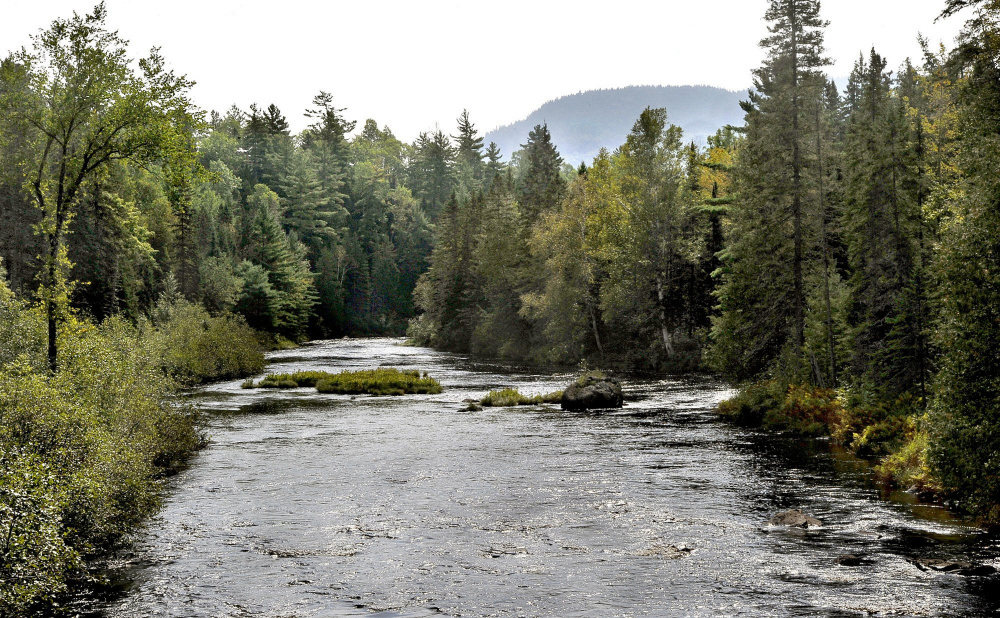When historians look back on Aug. 24, 2016, what will they say about the decision to take 87,000 acres of land in the heart of Maine’s northern forest out of production and turn it into a national monument?
We have heard a lot of predictions. Opponents claim that it represents a toe in the door for an ever-expanding federal presence in Maine and a disruption of the already struggling forest-products industry, the region’s primary source of jobs for more than a century.
Supporters of the monument envision a future in which tens of thousands of visitors will come to the Katahdin region every year to experience woods and wildlife that they can’t find at home, creating a new industry for a region hit hard by the permanent loss of two paper mills.
We think the supporters are right, but now it’s time to put the talking points away. Fighting against the Katahdin Woods and Waters National Monument will do no good for the people who hope to build a new diverse economy in the region. The designation of this monument marks another step in a painful transition away from reliance on a single industry, and changes this big are never easy.
The arguments have been boiling for two decades, since RESTORE North Woods first proposed putting 3.2 million acres into permanent conservation as a national park. That drew an understandable negative reaction from the businesses community and residents, who depended on working the largest forest east of the Rockies and enjoyed hunting, fishing and snowmobiling, which had been allowed on commercial forestland.
In the intervening years, philanthropist Roxanne Quimby quietly bought almost 90,000 acres east of Baxter State Park through her family foundation, with the plan of donating the land to the people of the United States. Her plan inherited most of the opposition that had been aroused by RESTORE’s idea, and she and her son Lucas St. Clair have spent years listening to their neighbors and trying to put their suspicions to rest, not always successfully.
The plan that resulted in the new national monument divides the land into two parts, with everything east of the East Branch of the Penobscot River remaining open for hunting and snowmobiling. Forestry operations will retain the right to cross the preserved land to log remote woodlots. Quimby is donating $20 million to the National Park Foundation to serve as the basis of an endowment that will support the development of visitor amenities. She also has pledged to raise another $20 million for the endowment.
People will have to travel a long way from the nation’s major population centers if they want to walk in these woods that so many Mainers take for granted. Maine Conservation Commissioner Walt Whitcomb denigrated the parcel Wednesday, calling it “swampy woodlands” that no one would want to visit. We suspect he’ll be proven wrong.
There probably will never be another large national park created in the eastern half of the country. Population growth and development elsewhere could make this precious piece of forest a refuge for anyone who wants to see the stars or spy a moose.
But that is a prediction of what might happen, and we should put speculation aside as the people of Maine work with the National Park Service to make the monument as successful as it can be. The park is open right now, and local businesses should be given the support they need to provide services to its first guests.
In the meantime, what do we say today about the decision by the president to accept Quimby’s gift of land and money to benefit this and future generations? There is only one thing to say: Thank you.
Send questions/comments to the editors.



Success. Please wait for the page to reload. If the page does not reload within 5 seconds, please refresh the page.
Enter your email and password to access comments.
Hi, to comment on stories you must . This profile is in addition to your subscription and website login.
Already have a commenting profile? .
Invalid username/password.
Please check your email to confirm and complete your registration.
Only subscribers are eligible to post comments. Please subscribe or login first for digital access. Here’s why.
Use the form below to reset your password. When you've submitted your account email, we will send an email with a reset code.